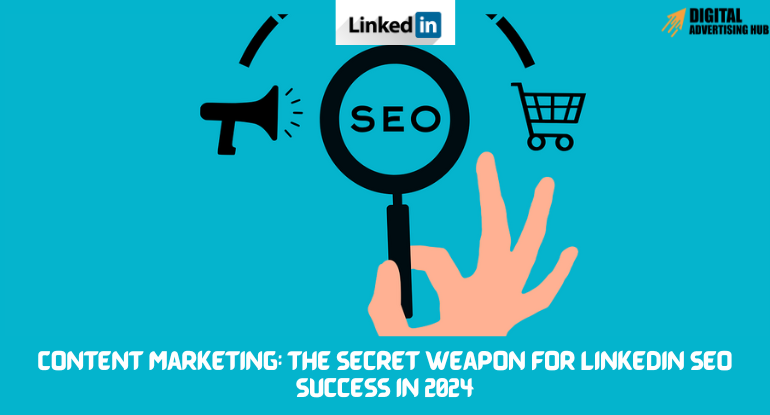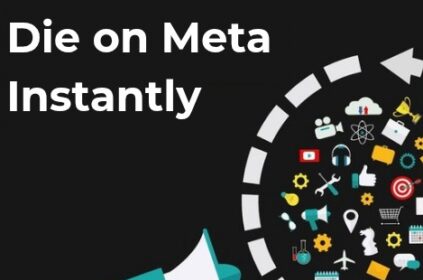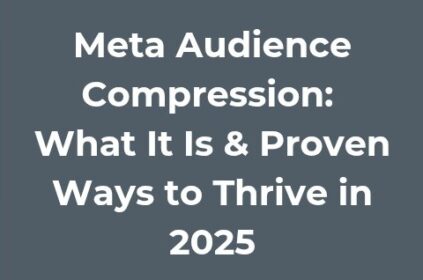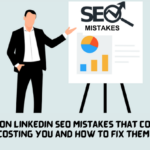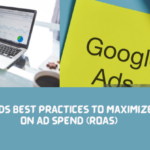Are you struggling to get your company page noticed on LinkedIn? You’re not alone. With millions of users vying for attention, mastering LinkedIn SEO is crucial for B2B success.
Our previous blog posts delved into the intricacies of LinkedIn SEO in 2024, offering 10 essential tips to optimize your company page and tackling 8 common mistakes that could be hindering your visibility. We explored strategies for keyword optimization, profile completion, and building a strong employer brand.
However, imagine a world where your company page wasn’t just optimized for search, but actively attracted and engaged your target audience. Imagine content that not only ranks well but positions you as a thought leader in your industry. This is the power of content marketing – the secret weapon for achieving LinkedIn SEO success in 2024.
Intrigued? Ready to unlock the true potential of your LinkedIn presence? Buckle up, because in this blog post, we’ll delve deep into how a strategic content marketing approach can propel your company page to the top of LinkedIn search results.
We’ll explore how to craft engaging content, leverage different formats, and maximize your reach for ultimate impact. Stay tuned – the key to unlocking the full potential of LinkedIn SEO awaits!
The Power of Content Marketing for LinkedIn SEO

In the competitive landscape of LinkedIn SEO, content marketing serves as a potent tool to amplify your optimization efforts. By creating high-quality content, you inject value and credibility into your profile or company page, attracting a targeted audience, fostering engagement, and ultimately propelling your visibility within search results.
Here’s how a strategic content marketing approach empowers your LinkedIn SEO strategy:
#1. Enhanced Keyword Targeting: Crafting well-researched content allows for the natural integration of relevant keywords that your target audience utilizes for their searches. This improves the organic discoverability of your profile or company page when users leverage the LinkedIn search function.
#2. Increased Engagement: Compelling content serves as a magnet, drawing users in and encouraging them to spend more time on your page. This extended dwell time sends positive signals to the LinkedIn algorithm, indicating the presence of valuable and informative content that merits improved visibility.
#3. Backlink Generation: Exceptional content transcends isolation. When others find your content insightful and informative, they are more likely to share it or link back to it from their own profiles or websites. These backlinks function as a form of endorsement for your expertise, further solidifying your authority and elevating your search ranking.

#3. Building Social Proof: Engaging content sparks dialogue. It generates comments, likes, and shares, creating a ripple effect of social proof that validates your brand and positions you as a thought leader within your industry. The LinkedIn algorithm recognizes this social validation and rewards profiles with a strong social presence.
#4. Improved Brand Awareness: Regularly publishing informative content establishes your brand as a thought leader within your industry. This increased brand awareness can attract potential clients, partners, and top talent to your profile or company page.
#5. Targeted Audience Attraction: By tailoring your content to the specific needs and interests of your target audience, you attract qualified leads who are genuinely interested in what you have to offer. This targeted approach fosters more meaningful connections and improves conversion rates.
#6. Content Repurposing Potential: High-quality content can be repurposed into various formats to maximize its reach and impact. For example, a long-form blog post can be broken down into bite-sized snippets for LinkedIn updates, or infographics can be created to visually represent key takeaways.
#7. Data-Driven Optimization: By tracking content performance metrics on LinkedIn, you gain valuable insights into what resonates with your audience. This data allows you to refine your content strategy and continuously improve the effectiveness of your LinkedIn SEO efforts.
Building a Content Marketing Strategy for LinkedIn SEO
Now that we’ve established the power of content marketing for LinkedIn SEO, let’s delve into crafting a winning strategy to propel your company page to the top. Here are some key steps to consider:
#1. Know Your Audience: The foundation of any successful content marketing strategy lies in understanding your target audience on LinkedIn. Conduct thorough research to identify their demographics, professional backgrounds, and pain points. What challenges do they face? What kind of content would they find valuable and informative?
#2. Content Brainstorming: Once you understand your audience, brainstorm content topics that resonate with their interests and align with your industry expertise. Consider a healthy mix of formats like articles, infographics, videos, and presentations to cater to different learning preferences.
#3. Keyword Research is Key: Don’t underestimate the power of keyword research. Utilize keyword research tools to identify relevant keywords with high search volume and low competition on LinkedIn. Integrate these keywords strategically throughout your content to improve organic discoverability.
#4. Content Creation Best Practices: Crafting compelling content is an art form. Focus on creating high-quality, informative pieces that provide value to your audience. Utilize strong headlines, visuals that break up text, and clear calls to action (CTAs) to encourage engagement and interaction.
#5. Thought Leadership Positioning: Strive to establish yourself as a thought leader within your industry. Share your expertise through insightful articles, participate in industry discussions, and engage with relevant influencers. This positions you as a trusted resource and attracts a targeted audience.
#6. Content Consistency is Paramount: Developing a consistent content calendar ensures a steady flow of fresh content to keep your audience engaged. Aim for a regular posting schedule, whether it’s daily, weekly, or bi-weekly, and stick to it. Consistency is crucial for building brand awareness and establishing yourself as a reliable source of information.
#7. Leverage Employee Advocacy: Empower your employees to become brand advocates by encouraging them to share your content on their own LinkedIn profiles. This expands your reach and taps into the networks of your employees, further amplifying your content’s impact.
#8. Data-Driven Optimization: Track and analyze the performance of your content using LinkedIn analytics. See what resonates with your audience and what falls flat. Use this data to refine your content strategy and continuously improve the effectiveness of your content marketing efforts for LinkedIn SEO.
How to Craft Engaging Content with Practical Examples
In the competitive landscape of LinkedIn, captivating content is the key to unlocking engagement and attracting your target audience. Here are some key strategies to craft content that resonates and drives results:
#1. Captivating Headlines:
First impressions matter, and your headline is the first thing users see. Craft headlines that are:
#1. Intriguing and Curiosity-Sparking: Use questions, numbers, or unexpected statements to pique user interest.
#2. Benefit-Oriented: Highlight the value your content offers to the audience.
#3. Actionable: Encourage users to click and learn more.
Example 1: “The Untold Secret to Crushing Your LinkedIn SEO (and It’s Not What You Think)”
Example 2: “5 Common LinkedIn SEO Mistakes That Could Be Costing You (and How to Fix Them)”
#2. Storytelling Power:
Humans are wired for stories. Weave narratives into your content to connect with your audience on an emotional level. Here’s how:
#1. Share Success Stories: Showcase how others have achieved their goals using your product or service.
#2. Highlight Customer Challenges and Solutions: Connect with your audience by presenting relatable problems and offering practical solutions through your content.
#3. Personalize with Anecdotes: Share relevant personal experiences or industry insights to add a human touch.
Example: “Company X, a small B2B startup, saw a 300% increase in qualified leads on LinkedIn after implementing a strategic content marketing campaign focused on industry thought leadership and educational content.”
#3. Compelling Visuals:
Text-heavy content can be overwhelming. Utilize visuals to enhance engagement and break up text. Here are some tips:
#1. High-Quality Images: Utilize eye-catching and relevant images to enhance the visual appeal of your content.
#2. Infographics: Present complex data or statistics in a visually appealing and easily digestible format.
#3. Short Video Clips: Short explainer videos or industry insights shared on LinkedIn can be highly engaging and informative.
Example: Discuss a recent industry trend and utilize an infographic to visually represent key statistics and data points.
#4. Actionable Tips and Insights:
Don’t just inform, empower! Provide your audience with actionable takeaways and practical steps they can implement to improve their own LinkedIn presence or achieve their goals.
Example: Offer a step-by-step guide on optimizing your LinkedIn profile for SEO or share actionable tips for crafting engaging LinkedIn posts.
#5. Variety is Key:
Cater to different learning preferences and keep your audience engaged by offering a variety of content formats. Here are some options:
1. Articles: Long-form content allows for in-depth dives into specific topics.
2. Blog Posts: Share industry news, insights, and thought leadership pieces in a blog format.
3. Videos: Utilize explainer videos, Q&A sessions, or industry expert interviews.
4. Polls and Quizzes: Encourage audience participation and gather valuable insights through interactive content formats.
5. Live Q&A Sessions: Foster real-time interaction with your audience and address their most pressing questions through live sessions.
By incorporating these strategies and tailoring your content to the specific needs and interests of your target audience, you can craft engaging content that drives results and propels your LinkedIn SEO success.
Take your learning further on how to craft engaging content with our comprehensive copywriting guide.
Content Marketing Frameworks that Drive LinkedIn SEO
A solid content marketing strategy is the foundation for LinkedIn SEO success. But within that strategy, specific frameworks can guide your content creation process and maximize its impact. Here are three frameworks to consider:
This technique, popularized by SEO expert Brian Dean, involves identifying existing high-performing content on a topic relevant to your audience. Then, you create something even more comprehensive, valuable, and informative – the metaphorical “skyscraper” that outshines the competition. Here’s how to implement it:
#1. Identify High-Performing Content: Use keyword research tools to find popular content on your chosen topic. Look for articles with high organic traffic or backlinks.
#2. Analyze and Enhance: Deeply analyze the existing content, identifying its strengths and weaknesses. Can you offer a more in-depth analysis, include relevant case studies, or present the information in a more engaging format?
#3. Create Your Skyscraper: Craft your content, ensuring it surpasses the existing content in value and comprehensiveness.
#4. Strategic Promotion: Promote your “skyscraper” content by reaching out to relevant websites or influencers who may be interested in linking back to your superior resource.
#2. The Pillar Cluster Model:
This framework emphasizes a structured approach to content creation. It involves building a central “pillar page” that acts as a comprehensive guide on a broad topic. This pillar page is then surrounded by supporting “cluster content” – shorter, more focused articles that delve deeper into specific aspects of the main topic and link back to the pillar page.
Here’s how to leverage the Pillar Cluster Model:
#1. Choose Your Pillar Topic: Select a broad yet relevant topic that aligns with your industry expertise and target audience’s interests.
#2. Develop Your Pillar Page: Create a comprehensive guide that covers all major aspects of the chosen topic. This page should be well-structured, informative, and optimized for relevant keywords.
#3. Craft Cluster Content: Develop a series of shorter, focused articles that address specific subtopics related to the pillar page. Each cluster content piece should link back to the relevant section of the pillar page for improved user experience and SEO benefits.
#3. The Content Repurposing Framework:
Creating high-quality content takes time and effort. The Content Repurposing framework allows you to maximize the reach and impact of your content by repurposing it into various formats. Here’s how it works:
#1. Identify Repurposing Opportunities: Start with high-performing long-form content like blog posts or white papers.
#2. Content Transformation: Transform your content into bite-sized snippets for LinkedIn updates, social media posts, or email marketing campaigns.
#3. Visual Storytelling: Extract key takeaways and create visually compelling infographics, slides, or short video recaps that summarize the content and entice users to delve deeper into the full piece.
By strategically utilizing these content marketing frameworks, you can create a more targeted, impactful, and SEO-friendly content strategy that fuels your success on LinkedIn.
Best Copywriting Tips to Craft Engaging Content for LinkedIn SEO Success

The art of crafting compelling content goes beyond just informative topics and visuals. Effective copywriting is essential for grabbing attention, keeping users engaged, and ultimately driving action on your LinkedIn profile. Here are some key copywriting tips to optimize your content for LinkedIn SEO success:
#1. Use Power Words and Active Voice:
- Ditch the Jargon: Avoid overly technical language or industry jargon that may alienate your audience.
- Embrace Strong Verbs: Utilize active voice and powerful verbs to create a sense of urgency and make your writing more dynamic.
- Incorporate Power Words: Strategically integrate words that evoke emotions, spark curiosity, or convey value propositions. Words like “ultimate”, “proven”, “transformative”, or “powerful” can enhance the impact of your content.
Example: Instead of “Our company offers marketing solutions,” write “Unlock explosive growth with our proven marketing solutions”.
#2. Keep it Concise and Clear:
Attention spans are short, especially on platforms like LinkedIn. Here’s how to ensure clarity and conciseness:
- Short Sentences and Paragraphs: Break down complex sentences into easier-to-digest pieces. Aim for shorter paragraphs to improve readability on mobile devices.
- Bullet Points and Subheadings: Utilize bullet points and subheadings to structure your content, improve visual flow, and guide readers through key points.
Example: Instead of a large block of text, present your key benefits in a bulleted list:
- Increase brand awareness
- Generate qualified leads
- Establish thought leadership
#3. Benefits Over Features:
People care more about how your content benefits them than simply listing features. Here’s the shift in focus:
- Focus on Value Proposition: Highlight the specific benefits your content offers to the audience and how it can help them achieve their goals.
- Problem-Solution Approach: Frame your content around addressing common pain points or challenges faced by your target audience. Demonstrate how your content provides valuable solutions.
Example: Instead of stating “Our software includes a social media scheduling tool,” write “Stop wasting time managing multiple social media platforms. Schedule all your posts in advance with our user-friendly social media scheduling tool and free up valuable time to focus on growing your business.”
#4. Optimize for Readability:
Readability is crucial for user engagement. Here are some tips:
- Vary Sentence Structure: Incorporate a mix of sentence lengths to avoid monotony.
- Conversational Tone: Maintain a professional yet conversational tone that feels genuine and relatable to your audience.
- Proofread and Edit: Ensure your content is free of grammatical errors and typos for a polished and professional look.
#5. Strong Call to Action (CTA):
Don’t leave your audience hanging! Tell them what to do next with a clear and compelling call to action (CTA). Here are some examples:
- Download our free guide
- Subscribe to our newsletter
- Visit our website to learn more
- Join the discussion in the comments below
By incorporating these copywriting best practices, you can craft clear, concise, and engaging content that resonates with your target audience and drives results on LinkedIn. Remember, compelling copywriting is a powerful tool for boosting engagement, conversions, and ultimately, your LinkedIn SEO success.
Leveraging Content Marketing for Maximum Impact
Having a solid content marketing strategy is a great first step, but true impact lies in maximizing its reach and influence. Here’s how to leverage your content for maximum impact on LinkedIn SEO:
Organic Reach Strategies:
#1. Post at Strategic Times: Research the optimal times your target audience is most active on LinkedIn. Schedule your content releases to coincide with these peak engagement periods to maximize organic reach. Here are some additional tips for organic reach optimization:
#2. Utilize LinkedIn Publisher Drafts: Schedule your posts in advance using LinkedIn Publisher Drafts to ensure consistent content flow and capitalize on peak times.
#3. Experiment with Different Post Cadences: While consistency is key, don’t be afraid to experiment with different posting frequencies (daily, weekly, bi-weekly) to find the sweet spot that optimizes organic reach without overwhelming your audience.
#4. Engage in Relevant Conversations: Actively participate in industry discussions and groups relevant to your content themes. Offer valuable insights and share your content where it adds to the conversation, attracting organic traffic through engagement.
#5. Audience Targeting: Utilize LinkedIn’s powerful targeting features to ensure your content reaches the right people. Narrow down your audience by industry, job title, company size, and other relevant filters to ensure your content resonates with the most relevant users. Here’s how to refine your audience targeting:
1. Leverage Saved Audiences: Build targeted audience segments based on specific demographics and professional backgrounds for future content campaigns. This saves time and ensures consistent targeting across your content strategy.
2. Utilize LinkedIn Lead Gen Forms: Run targeted ad campaigns with embedded Lead Gen Forms to capture valuable audience information directly within LinkedIn. This allows you to nurture leads generated through your content marketing efforts.
Content Promotion Strategies:
#1. Employee Advocacy in Action: Encourage your employees to share your content on their LinkedIn profiles. Provide them with social media sharing tools and pre-written snippets to make it easier for them to participate. Employee advocacy can significantly expand your reach and tap into new audience segments. Here’s how to amplify employee advocacy:
1. Create Employee Advocacy Programs: Develop a program that incentivizes employee participation in content sharing. This could involve recognition programs or gamification elements to boost employee engagement.
2. Offer Content Variety for Sharing: Cater to different employee preferences by creating a mix of text-based and visual content formats that are easily shareable on their individual LinkedIn profiles.
3. Consider Paid Promotion: While organic reach is crucial, consider supplementing your efforts with paid promotion options on LinkedIn. Utilize targeted advertising campaigns to reach a wider audience and drive even more traffic to your high-performing content. Here are some additional considerations for paid promotion:
I. Leverage LinkedIn Campaign Manager: Utilize LinkedIn Campaign Manager to create targeted ad campaigns that align with your content marketing goals. Define your budget, target audience, and desired actions (website visits, content engagement) for optimal results.
II. Test Different Ad Formats: Don’t limit yourself to one format. Experiment with Sponsored Content, Text Ads, and Dynamic Ads to see which formats resonate best with your target audience for your content promotion efforts.
Content Repurposing for Continued Engagement:
#1. From Long-Form to Bite-Sized: Don’t let your content gather dust after publishing. Repurpose long-form blog posts into bite-sized snippets for LinkedIn updates. Extract key takeaways and create engaging text blurbs with visuals to pique user interest and drive them to the full article. Here are some additional repurposing strategies:
1. Create LinkedIn Carousel Posts: Utilize the LinkedIn Carousel post format to share a series of visually-appealing slides summarizing key points or offering step-by-step guides based on your long-form content.
2. Develop Shareable Quotes: Extract impactful quotes or statistics from your blog posts and create visually compelling graphics for sharing on LinkedIn. This allows users to quickly grasp key insights from your content.
3. Visual Storytelling: Visuals are powerful tools for breaking up text-heavy content and boosting engagement. Transform longer blog posts into infographics, slides, or short video recaps that summarize key points in an engaging and visually appealing way. Here are additional ways to leverage visuals:
I. Utilize Stock Photos and Videos Strategically: Select high-quality stock photos and video clips that complement your content theme and resonate with your target audience.
II. Experiment with Live Videos: Host live Q&A sessions or industry discussions on LinkedIn Live to connect with your audience in real-time and promote your content in an interactive way.
Data-Driven Optimization for Continuous Improvement:
#1. Track and Analyze: Don’t operate in the dark! Utilize LinkedIn analytics to track the performance of your content. Analyze metrics like engagement rates, click-throughs, and content shares to understand what resonates with your audience. Here are some additional metrics to consider:

1. Impressions: This metric shows how many times your content appeared in LinkedIn feeds, regardless of user interaction.
2. Click-Through Rate (CTR): This metric indicates the percentage of users who saw your post and clicked on a link (e.g., to your website or full blog post).
3. Dwell Time: This metric measures the average amount of time users spend viewing your content, indicating its level of engagement.
4. Social Shares: Track the number of times your content is shared by users, which can signal valuable content and organic reach amplification.
#2. Refine Your Strategy: Based on your data analysis, refine your content marketing strategy for LinkedIn SEO. Double down on content formats that perform well and adjust your approach for topics with lower engagement. Continuously adapt and improve to maximize the impact of your content marketing efforts. Here are some ways to refine your strategy based on data:
#1. Identify Content Gaps: Analyze which topics resonate best with your audience and identify areas where your content might be lacking. This helps you tailor your content calendar to address user needs and interests.
#2. A/B Test Different Headlines & Visuals: Test variations of your headlines and visuals to see which versions generate the most clicks and engagement. Data-driven experimentation helps you optimize your content for maximum impact.
#3. Refine Your Targeting: Analyze which audience segments engage most with your content. Refine your targeting criteria on LinkedIn to ensure your content reaches the users most likely to find it valuable.
By following these strategies and continuously iterating based on data insights, you can transform your content marketing approach into a powerful weapon for dominating LinkedIn SEO and establishing your brand as a thought leader within your industry.
Remember, content marketing is a marathon, not a sprint. Consistency, quality, and data-driven optimization are key to unlocking its true potential for LinkedIn SEO success.
Conclusion
The landscape of LinkedIn is constantly evolving, and the fight for attention is fiercer than ever. But fret not! By harnessing the power of content marketing, you can transform your company page or profile into a magnet for qualified leads, industry recognition, and ultimately, improved SEO ranking.
Recap:
- Content marketing acts as the fuel that propels your LinkedIn SEO efforts. Compelling content attracts users, fosters engagement, and signals valuable information to the LinkedIn algorithm, boosting your visibility.
- A well-defined content marketing strategy is crucial. Understanding your target audience, conducting keyword research, and crafting high-quality content are foundational elements.
- Maximizing impact involves not just creating content, but actively promoting it. Leverage organic reach strategies, employee advocacy programs, and consider paid promotion options to amplify your content’s reach.
- Repurposing long-form content into bite-sized snippets and utilizing visuals like infographics and videos are excellent ways to keep your audience engaged and extend the shelf life of your content.
- Data is king! Utilize LinkedIn analytics to track content performance and refine your strategy based on audience engagement and key metrics.
By embracing the power of content marketing, you can transform your presence on LinkedIn from simply “existing” to actively thriving. Become a thought leader in your industry, establish yourself as a trusted resource, and build meaningful connections with your target audience.
Remember, consistency is key. Regularly publish high-quality content, track your progress, and continuously adapt your approach to stay ahead of the curve. With a strategic content marketing plan in place, you’ll be well on your way to dominating LinkedIn SEO and achieving long-term success on this powerful platform.
Are you ready to unlock the full potential of LinkedIn SEO with a content marketing strategy that drives results? Download our free guide on “7 Essential Content Marketing Frameworks to Boost” for actionable tips and insights to get you started!

